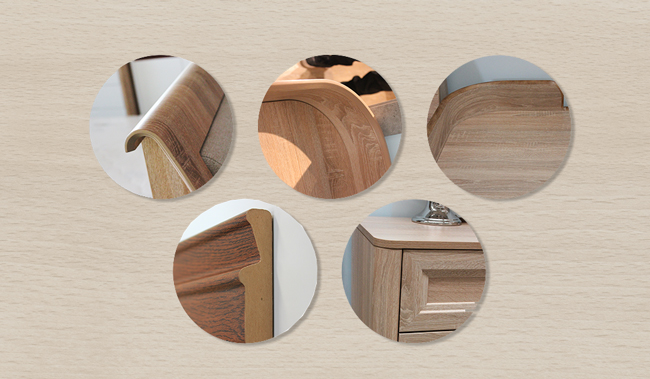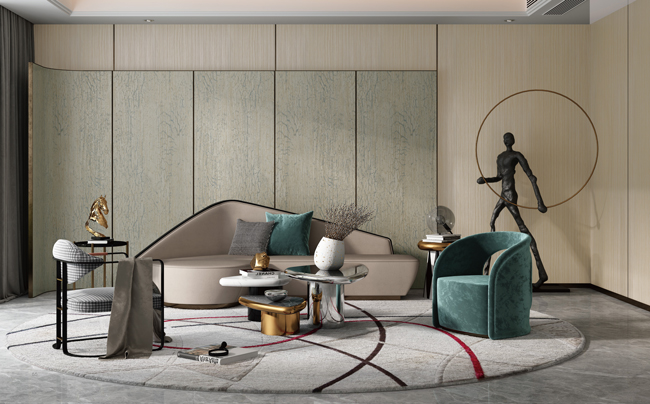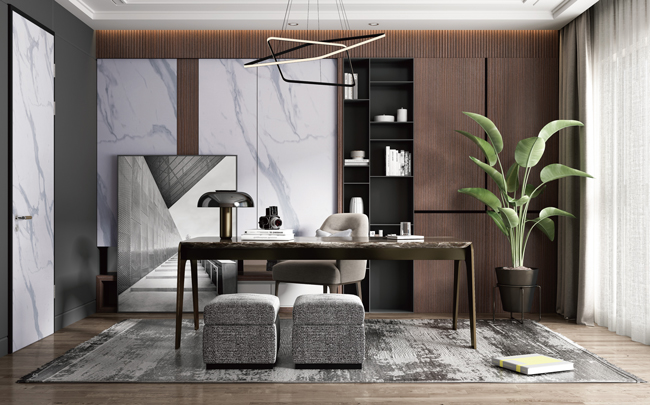CPL facing materials, or Continuous Pressure Laminate, are gaining popularity in various industries due to their versatility, durability, and eco-friendly characteristics. This innovative material is a type of laminated surface product made by combining melamine-impregnated decorative papers and resin-soaked papers under intense pressure and heat. In this detailed guide, we will explore everything you need to know about CPL facing materials, from their manufacturing process to their numerous applications in construction and interior design.
What is CPL Facing Material?
Continuous Pressure Laminate (CPL) is a high-quality laminated material formed by impregnating melamine resin onto paper and pressing it with kraft paper, parchment paper, or non-woven fabric under a continuous steel belt press. This advanced process results in a durable, scratch-resistant, and versatile surface that is ideal for a wide range of applications in both residential and commercial settings.
The main feature that distinguishes CPL from other laminate products like HPL (High-Pressure Laminate) is the consistency in its curing process, which allows for a more even distribution of resin and a more flexible final product. The pressing technique utilized in CPL manufacturing also allows for better bending angles, making it suitable for both flat and curved surfaces.

Key Features of CPL Facing Materials
1. Scratch-Resistant and Wear-Resistant Surface
One of the most notable benefits of CPL is its exceptional wear and scratch resistance. The melamine resin used in the surface treatment forms a hard, durable shell that protects the material from everyday wear and tear. This makes CPL a suitable choice for high-traffic areas, countertops, and other surfaces that are exposed to heavy use.
2. Flexible and Bendable
Unlike traditional laminate products, CPL materials are highly bendable due to their unique resin composition. This flexibility allows them to be used in a variety of applications that require curved surfaces, such as decorative panels, door frames, and moldings. The material’s ability to be shaped without compromising its structural integrity makes it ideal for creative design projects.
3. Wide Range of Textures and Finishes
CPL materials come in a variety of finishes, including glossy, matte, textured, and even leather-like surfaces. This broad range of finishes allows architects and designers to achieve a unique aesthetic while still benefiting from the durable properties of the laminate. Whether you are aiming for a modern or classic look, CPL can meet your needs.
4. Eco-Friendly and Low Maintenance
CPL materials are environmentally friendly, as they are made using eco-conscious processes. The product itself is free from harmful substances, and its low formaldehyde emissions meet stringent E1 environmental standards. Moreover, CPL is easy to clean and maintain, requiring only regular wiping to maintain its pristine appearance.

Manufacturing Process of CPL Facing Materials
CPL is created by impregnating decorative paper with melamine resin and then combining it with a kraft paper or other backing paper, which is also treated with a resin solution. This sandwich is then subjected to heat and pressure in a continuous press, where it is pressed between two steel belts. The process takes place under controlled time, temperature, and pressure conditions, ensuring that the laminate forms a strong bond.
The resulting product is a single-layer or multi-layer laminated board that can be cut and shaped into various forms. These sheets are then either rolled for easy transport or cut into individual sheets for specific applications. The versatility of the material makes it suitable for flat-laminating as well as curved-coating applications.
Applications of CPL Facing Materials
CPL facing materials are used in a wide range of industries and applications due to their durability, flexibility, and eco-friendliness.
1. Building and Construction
In the construction industry, CPL materials are commonly used for coating building components such as door frames, window sills, and skirting boards. Their resistant surface ensures they can withstand wear and tear in high-traffic areas while providing an attractive finish that complements any interior decor.
2. Furniture and Interior Design
CPL is widely used in furniture for applications such as cabinet facings, tabletops, and desktops. Its scratch resistance and easy-to-clean surface make it ideal for creating durable furniture surfaces that will stand the test of time. Additionally, CPL laminates can be used for interior decorations like wall panels, molding, and door panels, offering a modern, high-quality aesthetic.
3. High-Speed Rail and Cabin Interiors
Another popular application of CPL is in transportation, particularly in high-speed rail and aircraft interiors. The material’s lightweight nature, combined with its fire resistance, makes it suitable for cabin interiors where both safety and aesthetic appeal are essential.
4. Countertops and Work Surfaces
CPL materials are also an excellent choice for countertops and work surfaces, particularly in kitchens and laboratories. The material’s resistant to heat, scratches, and chemicals ensures that it maintains its appearance and functionality even in harsh environments.

Advantages of CPL Facing Materials
CPL has a distinct set of advantages that make it an attractive choice for a variety of applications:
1. Cost-Effective
CPL is an economical alternative to other high-end materials like high-pressure laminates (HPL) or solid surface materials. The material’s thin profile allows it to be used more efficiently, reducing waste and providing cost savings on production.
2. Enhanced Durability
CPL boasts superior scratch resistance, wear resistance, and impact resistance, making it ideal for areas that experience high foot traffic or heavy use. Additionally, CPL has strong moisture resistance and can withstand exposure to heat and chemicals, which further extends its lifespan.
3. Aesthetic Flexibility
CPL’s broad range of colors, patterns, and textures allows for endless design possibilities. Whether you need a sleek, modern surface or a natural stone look, CPL can mimic the appearance of materials like wood, stone, and leather, offering versatility in interior design.
4. Eco-Friendly Benefits
CPL is a sustainable material with low formaldehyde emissions and is free of harmful VOCs. It contributes to healthier indoor air quality, making it a great choice for green building projects.
Proper Storage of CPL Facing Materials
To maintain the quality of CPL facing materials, they must be stored under optimal conditions. The material should be stored in a dry, cool environment away from direct sunlight and moisture. For laminate sheets, they should be placed horizontally on a flat surface, with the decorative side facing up. Rolled CPL can be stored vertically or horizontally, provided the ends are properly secured to avoid any distortion.
Conclusion
CPL facing materials are a game-changer in the world of interior design and construction. Their combination of durability, aesthetic flexibility, and eco-friendliness make them ideal for a wide range of applications, from high-end furniture to building coatings and transportation interiors. Whether you're looking to upgrade the aesthetic appeal of your space or create durable surfaces that can withstand heavy use, CPL is an excellent choice.
English
Русский
العربية
Français
Español
Português
Deutsch
italiano
日本語
한국어
Nederlands
Tiếng Việt
ไทย
Polski
Türkçe
አማርኛ
Bahasa Melayu
தமிழ்
Filipino
Bahasa Indonesia
magyar
Română
Монгол
қазақ
Српски
हिन्दी
فارسی
Kiswahili
Slovenčina
Slovenščina
Svenska
українська
Ελληνικά
Suomi
Հայերեն
עברית
اردو
Shqip
বাংলা
Hrvatski
Afrikaans
Māori
සිංහල
Oʻzbekcha
latviešu
Беларуская мова
Bosanski
Български
ქართული
Lietuvių
Malti
Runasimi





